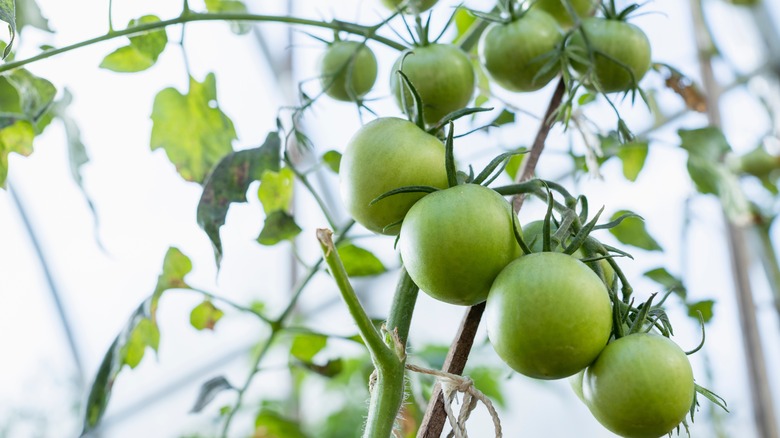Known for its beautiful color, pleasant smell, and natural ability to repel insects, lavender is a favorite among gardeners. The bushy perennial with tall stems and gorgeous purple blooms is relatively low-maintenance and thrives in Mediterranean climates. If you live in Hardiness Zones 5 to 10, the herb is a great choice to incorporate into your garden. There are many benefits of planting lavender, such as its natural ability to keep unwanted pests off your crops while attracting beneficial insects at the same time. This is a reason it is highly sought after for companion planting. And one plant that loves lavender is surely a popular one in the summertime — we’re talking about tomatoes, a fruiting vegetable you never can go wrong with.
Tomatoes and lavender pair well together because they provide each other mutual benefits, making them excellent companion plants. However, this pairing will take a little bit more effort than usual because their growing requirements are slightly different. One key item to keep in mind is that tomatoes need more water than lavender, so be mindful to not soak your lavender when watering your tomatoes. Besides that, they both thrive in full sun, warm climates, and can tolerate sandy loam soil. Once your plants settle in, you can relish in the benefits. Lavender will naturally keep well-known pests that tend to bother tomato plants away, while also speeding up the pollination process.
Pollinators such as bees and butterflies will visit

Lavender is a way to bring more pollinators into your garden such as bees and butterflies, so planting the herb close to tomatoes could increase the number of them in your patch. If bees are around, the pollinators will help tomato plants set fruit, which is the process of the yellow flowers turning into juicy tomatoes. Although they’re considered self-pollinating, tomato plants still need some help with the fertilization process. The plant’s flowers must be moved in some way (either by wind or bees) for them to release pollen. Bees are great at helping with this, and improve the odds of a promising harvest. Lavender also has a compound in it that reduces the aggressiveness of bees while they’re buzzing around your crops, which might give you some peace of mind too. In addition to bees, you can also expect lavender to attract gorgeous butterflies, and you can expect them to pollinate your crops.
Besides attracting good insects, lavender also can keep away bad insects that are known to disturb tomato plants. The smell of the herb drives away unwanted flying insects like obnoxious whiteflies.
The smell of lavender keeps unwanted pests away

Whiteflies can cause serious damage to your tomato plants, and rather fast too, given they multiply quickly. If there’s an infestation, you might notice the leaves on your plant start to curl and yellow, and they might also appear shiny from the honeydew whiteflies leave behind. The flying small insect can weaken your plant and reduce yields, which can be a major letdown during a growing season. This is where lavender can be helpful, as growing it near tomato plants is one way to get rid of whiteflies. Flying pests dislike the smell of lavender, and in general, the aroma mask smells. This makes it harder for them to discover the crops they’re after, such as tomatoes.
The strong smell of lavender is also known to be intolerable to aphids. Aphids are attracted to the yellow blooms of tomato plants and suck on the sap from new leaves instead of the more established ones, so lavender can help out here too. This herb will definitely bring good fortune to your garden and a healthy tomato crop too! Now if only we could fast-forward to spring.



